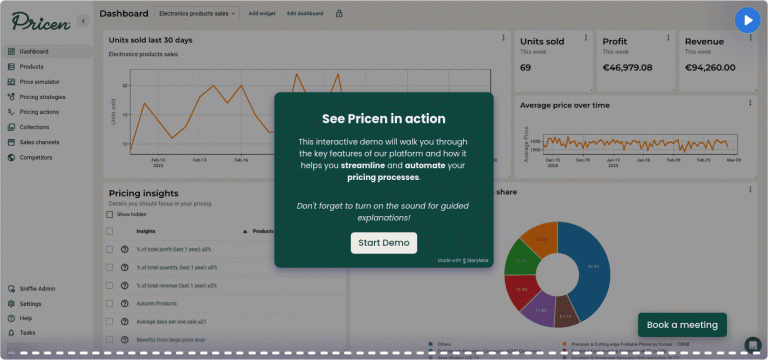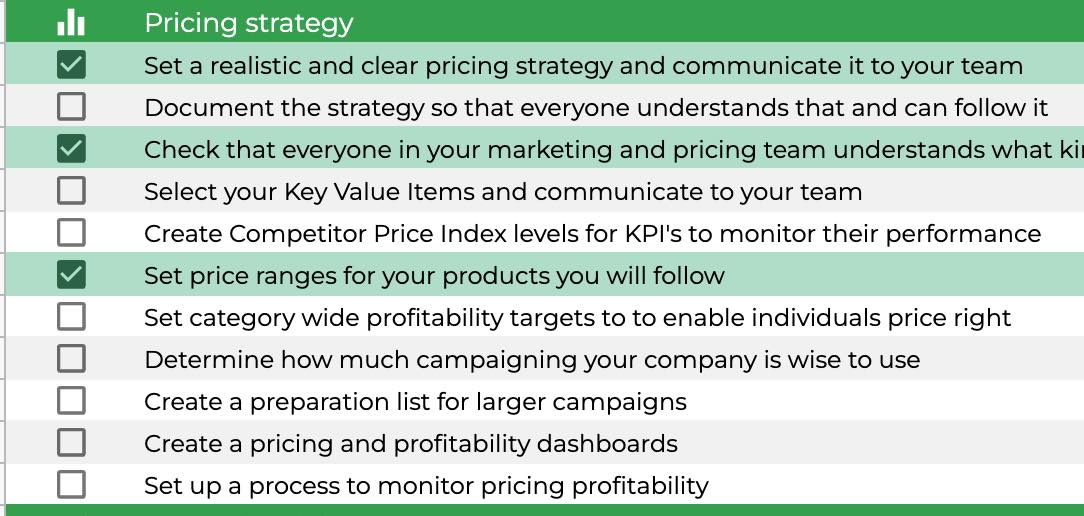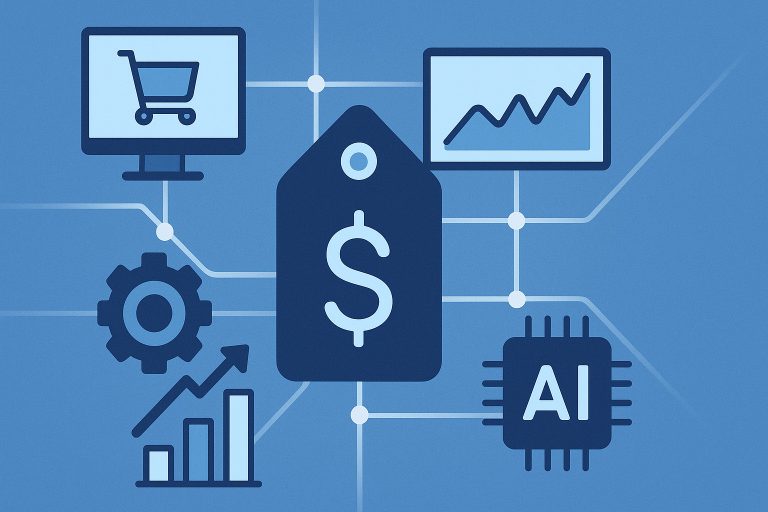With the retail landscape getting more complex (marked by tariffs, inflation, rising competition and customer price sensitivity), pricing has increasingly taken center stage in strategic discussions. Simon-Kucher & Partners’ Global Pricing Study 2025 indicates that while sales volume remains the top profit driver, its impact has declined (roughly 50% of profit improvement in 2021 down to ~40% in 2025), reflecting a greater emphasis on pricing as a lever.
Over the years, a wave of pricing tools has emerged to support retailers: from competitive price monitoring to rule-based dynamic pricing engines and AI-powered price optimization platforms. With so many options, it can be difficult to determine which tool is the best fit.
What is price optimization software and why do you need it?
Price optimization software helps retailers set the right prices for customers in order to optimally meet business goals such as profit, revenue growth, or inventory turnover. These tools ingest data (sales, costs, competitor prices, stock levels, demand patterns, etc.) and recommend or automate price changes based on that analysis.
The main benefit is that they enable more intelligent, data-driven pricing than traditional manual or spreadsheet-based approaches. Especially in omnichannel environments, automation and real-time responsiveness are essential.
Dynamic pricing vs. price optimization
Though often used interchangeably, these two concepts differ:
Dynamic Pricing involves automatically adjusting prices based on real-time inputs (like competitor prices or stock levels). It’s fast and tactical.
Price Optimization focuses on finding the best long-term price using predictive models (e.g., demand forecasting, elasticity analysis). It’s strategic.
Many modern tools blend both, but some lean more toward tactical dynamic pricing, while others emphasize strategic price optimization.
Key benefits of pricing software
Boost profitability: Identify and apply price points that drive margin growth without harming demand.
React fast to price changes: Automate price updates in response to competitor moves, supply shifts, or demand changes.
Improve price consistency: Align prices across channels and regions to eliminate inconsistencies and manual errors.
Use data for improved decisions: Use AI and analytics to uncover insights, test strategies, and simulate outcomes.
Scale pricing easily: Manage and optimize thousands of SKUs without increasing manual workload.
Solutions comparison
Below, we break down some of the best pricing software solutions:
Take a spin of Pricen with our quick, informative and fun demo.

Omnia Retail
Focus: Primarily dynamic pricing
Omnia Retail offers a dynamic pricing engine focused on rule-based pricing and real-time market tracking. It helps retailers monitor competitor prices and apply pre-set pricing strategies across channels automatically. Best for retailers focused on competitive tracking and real-time online price alignment.
Pros:
Strong for competitive price tracking
Real-time dynamic pricing with rules
Easy-to-use interface
Designed for omnichannel retailers
Cons:
Limited predictive AI features
Not ideal for strategic price optimization
May require multiple accounts for multi-region operations
7Learnings
Focus: Primarily price optimization
7Learnings provides AI-powered price recommendations that forecast demand and optimize pricing based on business goals like margin, revenue, or sell-through. It’s designed to automate decision-making and deliver measurable profit uplifts. Great for data-driven teams seeking AI-powered demand forecasting.
Pros:
Predictive AI with demand forecasting
Goal-based optimization (e.g., profit, revenue)
Real-time simulations and A/B testing
Handles large amounts of data and prices
Cons:
Geared toward mid-to-large retailers with good data maturity
Requires data integration and setup time
- Can get expensive at scale
Competera
Focus: Hybrid (dynamic + optimization)
Competera combines dynamic pricing capabilities with contextual price optimization. Its AI helps optimize initial, shelf, promotions, and markdowns prices across channels. Useful for large chains needing a mix of rule-based and AI-driven pricing across all channels.
Pros:
Fast repricing with automation
Flexible rule + AI hybrid model
- Great customer support
Cons:
Learning curve for new users
Premium pricing for full feature set
Needs high-quality data for best results
PriceShape
Focus: Primarily dynamic pricing
PriceShape is a dynamic pricing and competitor monitoring tool designed for retailers and brands that want an easy-to-use solution. It offers simple automated price adjustments and real-time market making it a strong fit for small to mid-sized online retailers that want agility without heavy tech investment.
Pros:
User-friendly interface with intuitive setup
Automated competitor price tracking and dynamic pricing
Strong customization options via pricing rules
Easy integration with popular e-commerce platforms
- Less expensive than most pricing platforms
Cons:
Less emphasis on deep AI-based price optimization
May lack advanced predictive analytics
Primarily focused on online retail use cases
Quicklizard
Focus: Primarily dynamic pricing
Quicklizard is a real-time dynamic pricing engine that allows brands and retailers to adapt prices across multiple channels using rules, AI, and machine learning. Best for retailers needing fast, high-frequency pricing automation across digital channels.
Pros:
Fast, real-time price updates
Channel-specific pricing strategies
Machine learning + business rules
API-first and integration-ready
Cons:
Complex initial setup according to some users
Learning curve for new users
Focuses more on reaction than long-term optimization
Pricen
Focus: Hybrid (dynamic pricing + price optimization)
Pricen is a next-gen pricing platform that covers the entire price lifecycle: from setting base prices to running promotions and managing markdowns. Powered by reinforcement learning AI, it continuously adapts to your data and market conditions to recommend optimal prices that balance margin, volume, and competitiveness. Pricen supports both rule-based automation and AI-driven optimization, as well as price simulations that help teams forecast and stress-test strategies.
Pros:
Advanced AI trained on real retail data
Seamless switch between rules, AI, and simulations
Supports multiple pricing strategies by scenario
Fast rollout and enterprise-level scalability
Cons:
Requires data setup and team buy-in
Not ideal for small retailers or those selling only few SKUs
101 Proven pricing tips to boost your business - Free checklist
Why get our checklist?
- 101 tips in checklist form
- Each item directly contributes to improving your pricing
- Share tasks and collaborate with your team

Conclusion
Whether you prioritize speed and flexibility (dynamic pricing), strategic forecasting and goal-based decisions (optimization), or a blend of both, there are platforms to fit every need.
The key is matching the tool to your maturity level, data availability, and business goals. With the right solution, pricing can evolve from a tactical function into a true growth driver.

